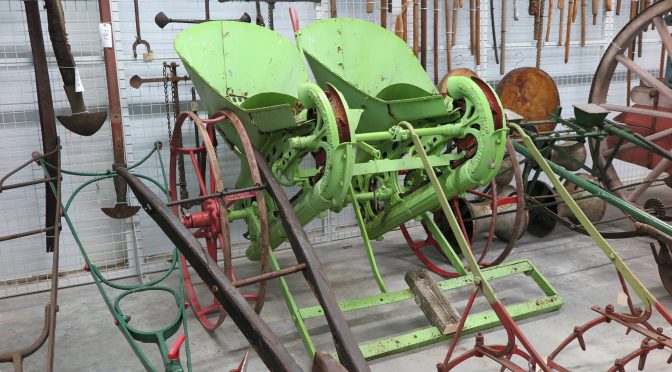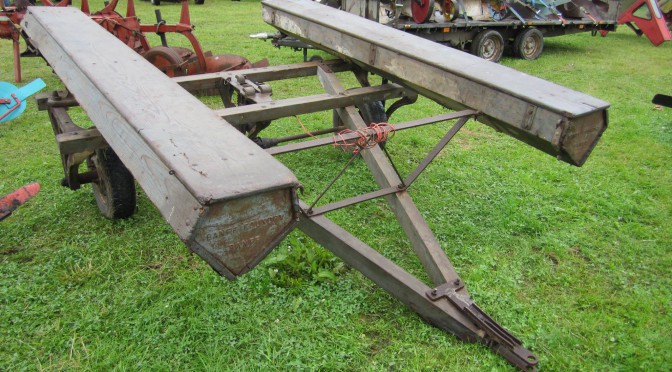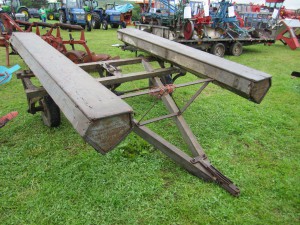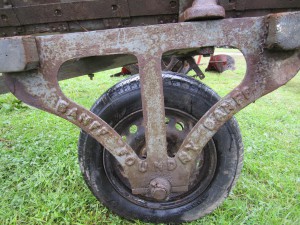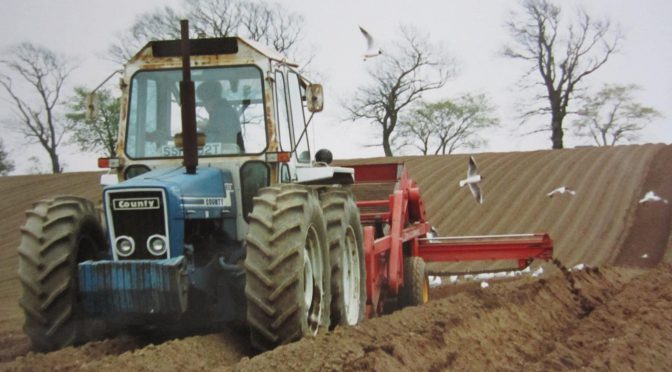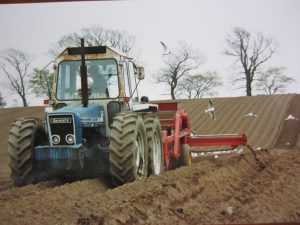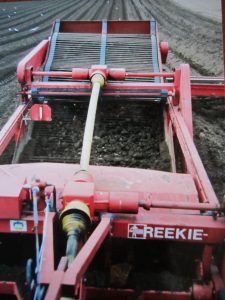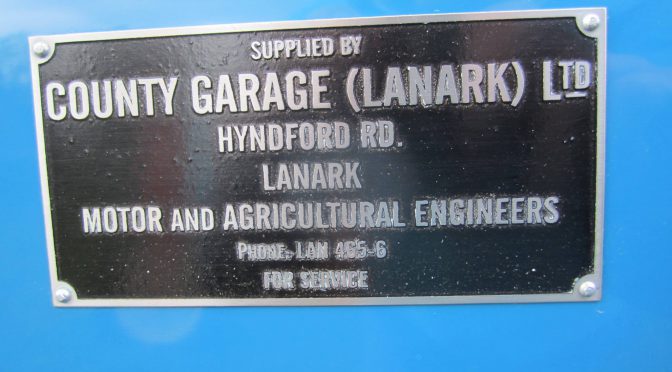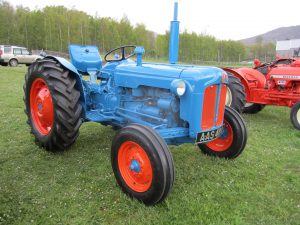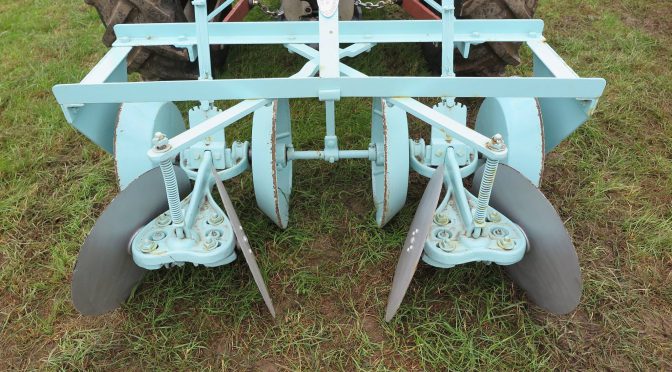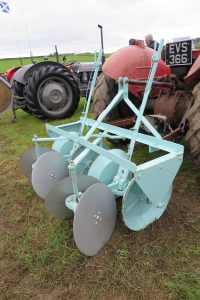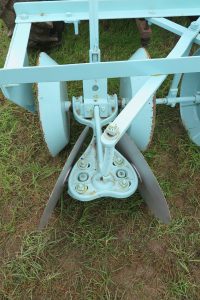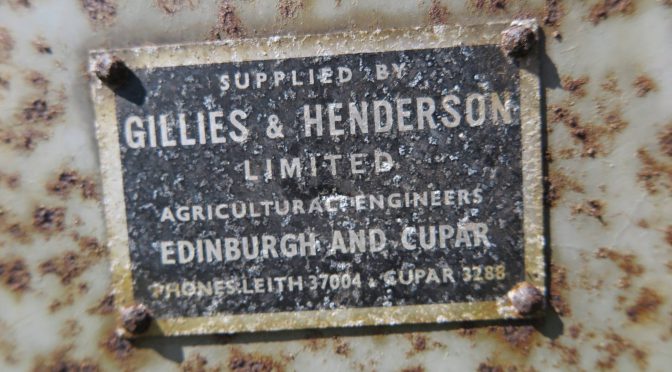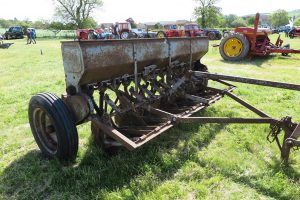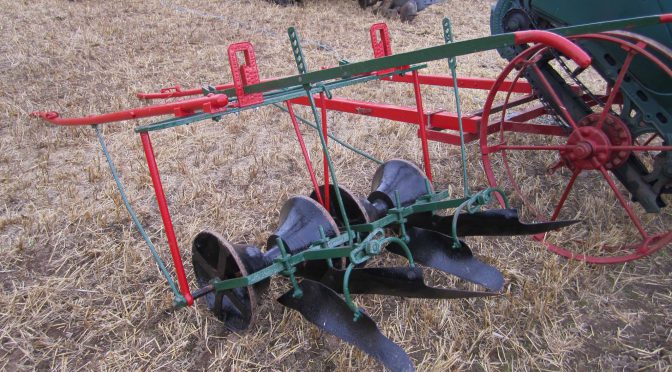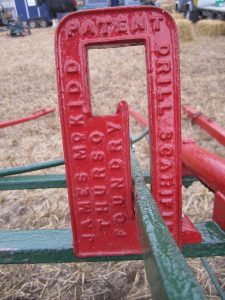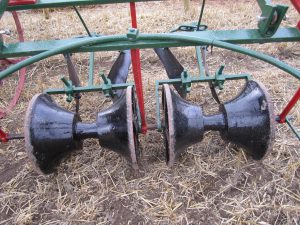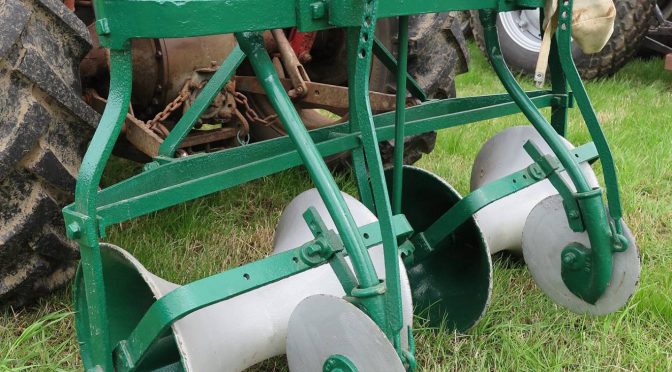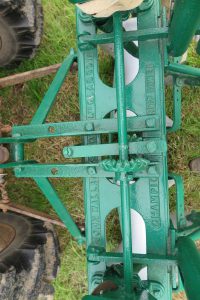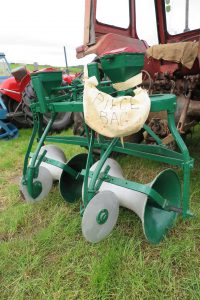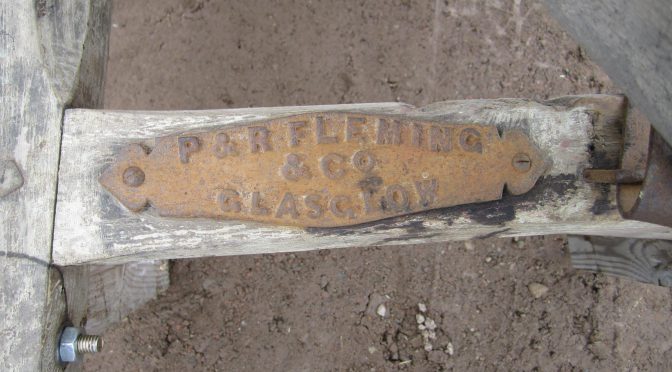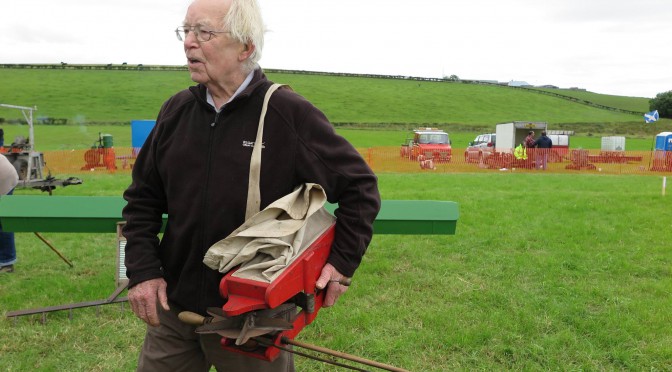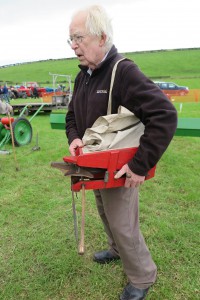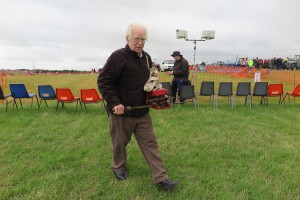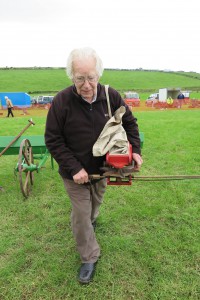If you were a farmer in the vicinity of Glasgow into the 1950s and you were looking for a range of implements and machines, you might have looked to see what P. & R. Fleming had in stock.
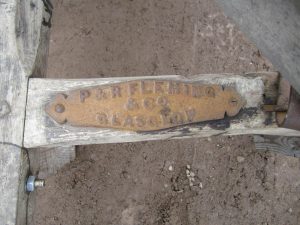 The company was already established by 1844 when it described itself as “P. & R. Fleming, iron merchants and ironmongers, 29 Argyll Street and 18 Stockwell Street, Glasgow.” By 1864 the company had expanded its activities, and recorded itself as “ironmongers, iron merchants, smiths, gas fitters, bell hangers, wire fence and gate manufacturers, and agricultural implement warehouse”. That expansion continued. In 1894-95 it is recorded as “P. & R. Fleming & Co., ironmongers, iron merchants, smiths, gas fitters, bell hangers, wire fence and gate manufacturers and agricultural implement makers, warehouses, 29 Argyle Street; iron warehouse, 18 and 24 Stockwell Street, Glasgow; 16 Graham Square, Glasgow; branch establishment, 1 Dowanhill Place, Patrick; works, Kelvin Street, Partick”. In 1937 it had addresses at Graham square, Glasgow, and at stand 106D of the Edinburgh Market. An address in 1870 was for it at the Clydesdale Iron Works, Possilpark, Glasgow. Its business was wound up in 1983.
The company was already established by 1844 when it described itself as “P. & R. Fleming, iron merchants and ironmongers, 29 Argyll Street and 18 Stockwell Street, Glasgow.” By 1864 the company had expanded its activities, and recorded itself as “ironmongers, iron merchants, smiths, gas fitters, bell hangers, wire fence and gate manufacturers, and agricultural implement warehouse”. That expansion continued. In 1894-95 it is recorded as “P. & R. Fleming & Co., ironmongers, iron merchants, smiths, gas fitters, bell hangers, wire fence and gate manufacturers and agricultural implement makers, warehouses, 29 Argyle Street; iron warehouse, 18 and 24 Stockwell Street, Glasgow; 16 Graham Square, Glasgow; branch establishment, 1 Dowanhill Place, Patrick; works, Kelvin Street, Partick”. In 1937 it had addresses at Graham square, Glasgow, and at stand 106D of the Edinburgh Market. An address in 1870 was for it at the Clydesdale Iron Works, Possilpark, Glasgow. Its business was wound up in 1983.
The company started its long practice of attending the Highland Show in 1867. It was an annual exhiitor for many years after the Second World War. It receeived a minor silver medal for its collection of implements and machinery in 1875. It was also a regular advertiser in the Scottish agricultural press.
Among its implements and machines that it manufactured at the Clydesdale Iron Works at the turn of the twentieth century was its potato and charlock sprayer and its patent rick lifter, horse pole fork, rick lifter, grapple forks and spear forks. It was also well known for supplying ironwork for a variety of construction projects.
As well as making its own range of agricultural implements and machines, it was also an extensive agent. In 1910 it held agencies for some of the major companies such as R. Hornsby & Sons Ltd, Grantham, Lawrence-kennedy, Glasgow, Gregg & Co., Belfast, Harrison, McGregor & Co., Ltd, Leigh, Ransome, Sims & Jefferies Ltd, Ipswich, and Martin’s Cultivator Co., Stamford.
In 1910 a farmer could purchase a wide range of implements and machines, including oil engines, cow milking machines, grinding mills, thrashing mills, potato sprayers, sheep dipping apparatus, patent thistle and bracken cutters, rick lifters, horse forks, hay collectors, binders, mowers, reapers and mowers, cultivators, ploughs, garden tools, lawn mowers and dairy utensils.
If you needed it, Fleming had it. If you were in Edinburgh, you would go to James H. Steele, which had the strapline “Everything for the farm”. But the two companies had one man in common: James H. Steele. James had been in the employment of P. & R. Fleming until September 1916 as a representative in Edinburgh and the East. Steele brought Fleming’s business East and allowed the Edinburgh and east of Scotland farmers to have their own farming emporium.
The photograph was taken at the Scottish National Tractor Show, Lanark, September 2014.
© 2016 Heather Holmes
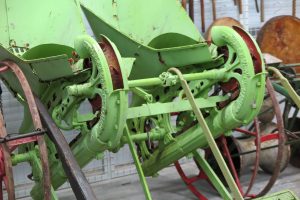 One of the renowned tattle planters from the time of the First World War was the two row “Richmond” potato planter, made by John Wallace & Sons, Paton Street, Dennistoun, Glasgow.
One of the renowned tattle planters from the time of the First World War was the two row “Richmond” potato planter, made by John Wallace & Sons, Paton Street, Dennistoun, Glasgow.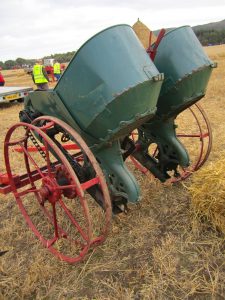 There are features on the planter that you will find on more recent tattie planters. The potatoes are picked up from the hopper by a series of buckets, at spaced intervals on an endless travelling chain, and elevated to a point whereby they are then tilted into tubes and delivered at regular distances apart into the drill or drills.
There are features on the planter that you will find on more recent tattie planters. The potatoes are picked up from the hopper by a series of buckets, at spaced intervals on an endless travelling chain, and elevated to a point whereby they are then tilted into tubes and delivered at regular distances apart into the drill or drills.